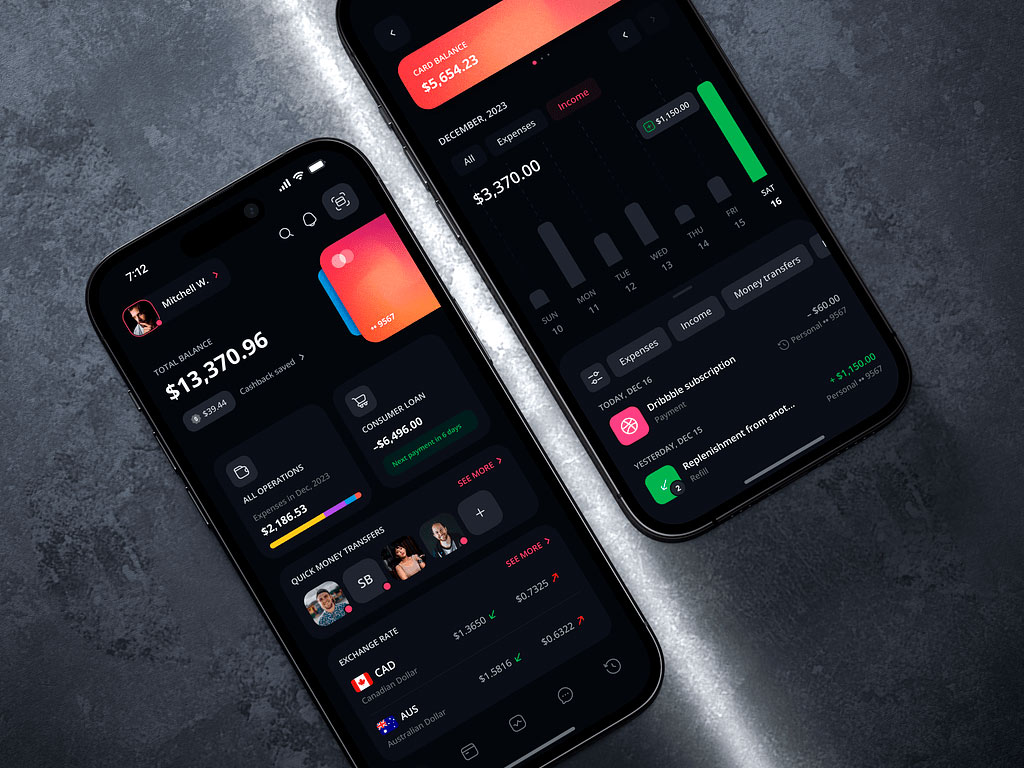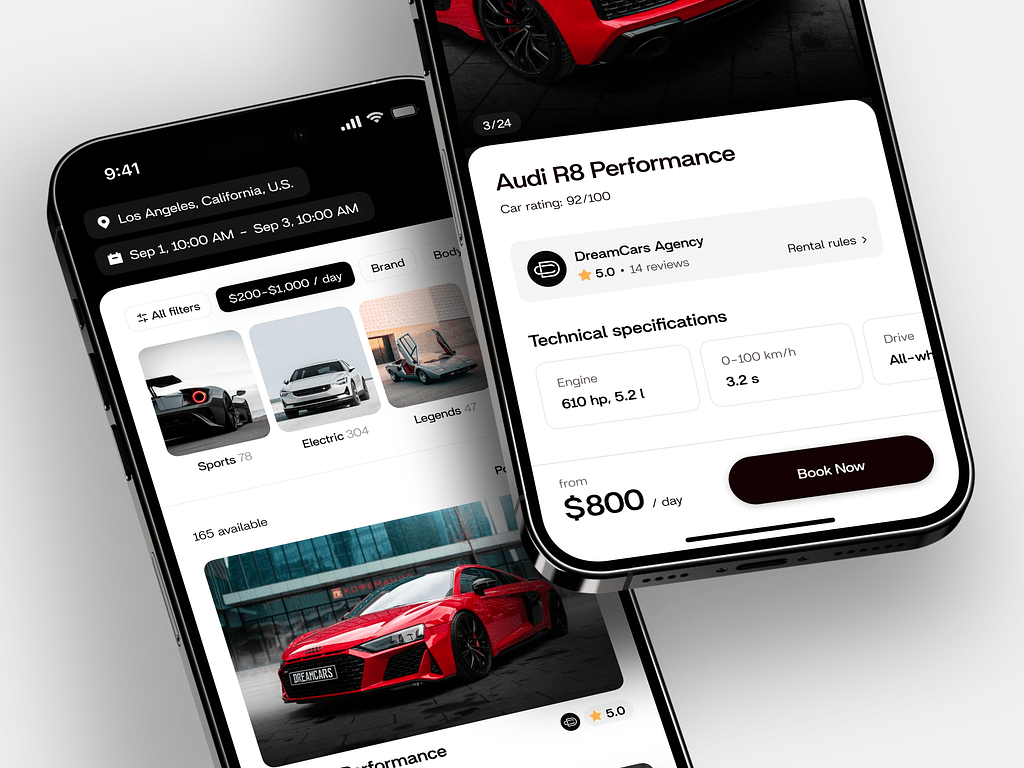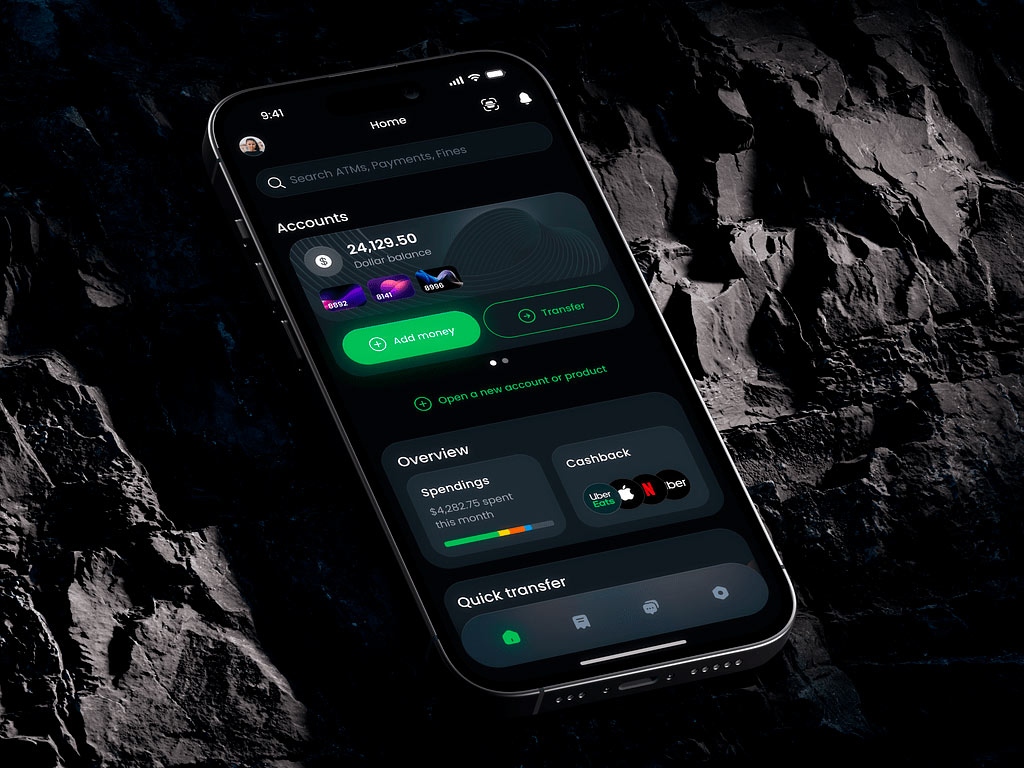As a startup or product owner, you’ve poured your blood, sweat, and tears into developing and launching your app. You’ve overcome countless challenges and hurdles to bring your vision to life. But the journey doesn’t end there. The cost of app maintenance can often be a painful reality that many overlook or underestimate.
In this article, we’ll provide you with insights and tips on how to effectively manage and budget for these ongoing expenses. We’re here to help you navigate through the murky waters of app maintenance costs. So sit back, relax, and let us guide you through this essential aspect of project ownership.

Mobile Banking App by Conceptzilla
5 reasons to maintain an app
It is the ongoing process of upgrading, enhancing, and changing your application. It requires bug patches, upgrades, OS improvements, etc. Imagine you’ve bought a book and sat down to read it, but after a dozen pages, the book goes blank. You’d be very disappointed and wouldn’t purchase any items from that publisher or author.
The same goes for any digital project. Upkeeping is crucial for its functionality, usability, and overall success in the long run. If the example with a book doesn’t tell you much, here are some key reasons why app maintenance is essential:
- Bug fixes: as we said, the release is not the end of your journey. The users can find new bugs, from minor to experience-breaking, and you have to fix these issues to smooth the workflow and prevent potential crashes or malfunctions.
- Security updates: technology is constantly evolving, and so are security threats. With regular maintenance, you can implement necessary security updates and protect your app and user data from potential cybersecurity risks.
- Compatibility with new devices: as new devices and operating systems emerge, it’s important that your app remains compatible and functions well across different platforms. Maintenance of your mobile app helps the project adapt to the latest technologies and trends.
- Performance optimization: over time, applications become slower due to accumulated data or outdated code. To keep user retention high, you need to optimize performance and improve speed constantly.
- User feedback: listening to user feedback and implementing new features or improvements based on user requests is key for your project to stay relevant and engaging.
- Market competition: if you don’t upkeep your app, you give your rivals a blank check. You will eventually lose your niche and it will be very hard to win it back.
Сore types of app maintenance activities
Apart from bug fixes, security patches, and performance updates, there are a few more things to reignite the sparkle in the user’s heart.
First of all, you can focus on content updates. Refresh content, images, or information within the app to keep it up-to-date and relevant to the target audience. The little touch-ups here and there show users that you still care about the project.
Next, together with security updates, you can also regularly back up data and manage storage to prevent data loss and ensure its integrity. In case of a system failure, you can recover the info at least partially. What’s more, it also helps you improve the app’s performance because the data is organized and easily accessible.
The app should comply with the laws and regulations of various countries, as well as industry standards, like data privacy regulations or accessibility guidelines. Due to changes in the laws, you can release compliance updates to stay relevant.

Car Rental Mobile App Design Concept by Conceptzilla
How often you should update your app
The frequency depends on several factors, including update type, competition, market trends, and the complexity of your project. There is no golden middle, but the best move is to balance between addressing user needs, enhancing app functionality, and staying competitive in the market. It’s essential to prioritize quality over quantity and ensure that each update adds value to the user experience.
Consider establishing a regular app maintenance schedule to provide users with a consistent stream of improvements and new features. With this approach, you can maintain user engagement and retention.
Apart from regular maintenance of your mobile app, you can time the patches to certain events — for example, device and OS updates, new feature releases, etc. You prevent compatibility issues, and at the same time — stay with the latest trends and emerging technologies. This attitude puts you on a new level in the eyes of your clients.
How much does it cost to maintain an app?
The app maintenance costs also vary. You need to take into account the project’s complexity, the update frequency, the size of the development team, the platforms supported, and the task scope. Talking about approximate numbers, the procedure costs up to 50% of all expenses during the first year. With time, the maintenance expenses usually fall to 15% to 20% of the initial app development cost.
If you launch a native Android or iOS application, the price of maintaining it will be higher. You will need to list your app on the stores, and listing a project in the Apple Store or Google Play isn’t free. Apple charges an annual listing price of $99, whereas Google charges a one-time fee of $25. In addition, both retailers take a 30% share of any in-app purchases made through their platforms.
You also need to store the data somewhere, and cloud hosting doesn’t come for free. The average server costs range from $70 and $320 per month, depending on the project’s size, complexity, and the mobile hosting subscription plan.

Barber Booking Mobile App Concept by Conceptzilla
Minimizing the cost of app maintenance
The desire to cut expenses is natural: the app development charges are costly for small businesses and startups. There are a few ways to cheat and provide high-quality updates without breaking the bank.
Outsourcing vs in-house app maintenance
A clean and efficient codebase is key to lowering expenses. To build one, you need a team that follows coding standards. The better the code is, the easier it is to maintain, debug, and update, reducing the time and effort.
There are two types of teams you can hire: an outsourcing agency or an in-house development team. What’s better?
Hiring an outsourced development team has the potential to lower development expenses by up to 50%. In this situation, the usual hourly rate is $40-45 for development and $70-80 for design. As a result, you can access a wide range of skills and knowledge without the overhead expenses of hiring and training in-house staff.
However, outsourcing app maintenance does come with its challenges. Communication issues, such as time zone differences and language barriers, can arise when managing external teams. Additionally, there may be concerns regarding data security and confidentiality when sharing sensitive information with third-party providers.
In-house app maintenance offers you greater control and oversight over the whole process. The teams have closer progress monitoring and adherence to standards. They can deliver tailored solutions and insights specific to the app’s requirements and business goals, leading to faster communication and decision-making.
However, maintaining an in-house team comes with higher costs of app development such as salaries, benefits, and training. Resource constraints during peak periods or when facing complex issues can further strain internal resources.
Consider all the pros and cons and pick the variant that suits your project.
Prioritize features
Adding all features and tricks to the pot is unwise. Instead, focus on implementing essential features and functionalities that add value to users and align with your core objectives. Avoid unnecessary complexity or features that may increase app maintenance costs without significant benefits.
Automation
In the age of AI, you can automate most routine tasks. This approach speeds up the process of testing, deployment, and monitoring. You reduce manual effort and save time and resources, improving overall efficiency.
Cloud hosting
While being another expenditure item, cloud hosting services reduce infrastructure costs and scale resources based on demand. You get cost-effective solutions for storage, computing power, and monitoring. As a result, the expenses may be even lower.
Regular testing
With thorough testing, you can identify and fix issues early on. In this case, you devote a portion of your time and effort to prevent costly tasks caused by bugs or performance issues.
Challenges in budgeting and tracking app maintenance costs
If you decide to upkeep an app after release, then be prepared to face some challenges, like:
- Complexity of costs: the expenses can be complex and multifaceted: development team salaries, software licenses, cloud hosting fees, third-party service provider costs, maintenance tools, etc.
- Scope creep: it refers to the tendency for project requirements to expand beyond the initial scope, resulting in increased costs and timeline extensions. You continuously introduce new features and bug fixes without proper evaluation, which can lead to unexpected expenditures and budget overruns.
- Changing technologies: maintenance expenses can be impacted by shifts in technologies, platforms, and frameworks. Upgrading software, ensuring compatibility with new operating systems, and adopting new technologies can all incur additional costs. Especially if your team has limited technical expertise.
- Lack of visibility: limited visibility can hinder effective budgeting and tracking. Without detailed insights and reporting mechanisms, you may struggle to accurately monitor expenses, identify cost drivers, and make informed decisions.
- Resource allocation: determining the optimal allocation of resources, whether internal staff or external service providers, based on the volume and complexity of requirements, can be a delicate balancing act that impacts both costs and the quality of app maintenance.
- ROI measurement: evaluating the return on investment can be difficult but is crucial for assessing the effectiveness and value of maintenance efforts. Measuring and tracking the impact of maintenance costs on key performance indicators, such as user engagement, retention, and revenue generation, can provide insights into the cost-effectiveness of maintenance strategies.
Overcoming these challenges in budgeting and tracking app maintenance costs requires a strategic approach, clear communication, robust financial management processes, and the use of tools and technologies to streamline cost tracking and reporting.

Travel Booking Concept by Shakuro
Wrapping up
Maintenance of mobile apps is essential for several reasons, including addressing bugs and performance issues. The application should be compatible with new operating systems and have the latest security updates to protect user data.
In today’s digital era, where mobile applications play a pivotal role in shaping customer interactions and driving business outcomes, prioritizing app maintenance and managing costs diligently are essential for achieving long-term success.
Do you want to create, launch, and upkeep an app? Contact us for a full-cycle app development in various spheres: from e-learning platforms to financial projects.

